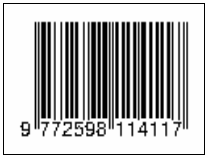Livelihood Study of the Second-Generation Households of Resettlement in Koto Panjang Hydropower Region, Riau Province
Abstract
The construction of dams in many cases has led to forced displacement and resettlement of about 40-80 million people worldwide. Several studies have reported that Development Induced Displacement and Ressettlement (DIDR) cause negative impacts on living standards and livelihood outcomes of the resettled communities. Koto Panjang Dam has been in operation for 20 years. The impact of settlement movement due to the construction of a long Koto Panjang dam is also experienced by second generation resettlers. The objectives of this study were: a) to assess the profile access and control on household farming livelihood of second generation of resettlers, and b) to assess the level of household welfare of the second generation in Koto Panjang hydropower region, Riau Province. All second-generation households in Koto Mesjid and Pongkai Istiqamah were taken for samples (92 households). Profile access and control on households farming at the site of this study showed that men still dominated in access and control on farm management such as: land, working, credit, means of production, breeding, pest and disease control, education, training, and agricultural extension. Women were more dominant in processing and selling the yields. The poverty experienced by households in Koto Masjid village was largely due to limited land ownership, while that experienced by households in Pongkai Istiqomah village was due to the dependence of livelihoods on the rubber plantation, in addition to the limited field of other businesses in the village.
Keywords
Full Text:
PDFReferences
Agnes, R. D., Solle, M. S., Said, A., & Fujikura, R. (2009). Effects of Construction ofthe Bili-Bili dam (Indonesia) on Living Conditions of Former Residents and Their Patterns of Resettlement and Return. International Journal of Water Resources Development, 25(3), 467-477.
Bisht, T.C. (2009). Development-Induced Displacement and Women:The case of the Tehri Dam, India. Asia Pacific Journal of Anthropology 10 (4), pp. 301-317.
Bui, T. M. H., & Schreinemachers, P. (2011).Resettling Farm Households in Northwestern Vietnam: Livelihood Change and Adaptation.International Journal of Water Resources Development, 27(4), 769-785.
Cleetus, R., Clemmer, S., Davis, E., Deyette, J., Downing, J., Frenkel, S., 2012. Ripe for Retirement — The Case for Closing America's Costliest Coal Plants.
http://www.ucsusa.org/sites/default/files/legacy/assets/documents/clean_energy/Ripe-for-Retirement-Full-Report.pdf.
Cernea, M.M., Schmidt-Soltau, K., 2006. Poverty Risks and National Parks: Policy Issues in Conservation and Resettlement. World Development 34(10), 1808-1830.
Karimi, S., M. Nakayama., R.Fujikura, T. Katsurai, .Iwata, T.Mori & K.Mizutani. (2005). Post Poject Review on a Resettlement Programme of the Kotopanjang Dam in Indonesia. Water Resources Development.Vol 21. No.2, 371-384, June 2005.
Karimi, S., Taifur, W.D. (2013). Resettlement and development: A survey of two of Indonesia’s Koto Panjang resettlement villages. Int. J. Water Resour. Dev. 2013, 29, 35–49.
Maldonado, J. (2012). Climate Change and Displacement: Human Rights and Local Knowledge as Guiding Principles for New Policy Initiatives. Climate Change and Fragile States: Rethinking Adaptation, 79.
Robinson, C.W. (2003). Risks and Rights: The Causes, Consequences, and Challenges of Development-Induced Displacement. Washington DC: The Brookings Institution.
SRP, 2015. Theodore Roosevelt Dam. http://www.srpnet.com/water/dams/roosevelt.aspx.
Takesada, N. (2009). Japanese Experience of Involuntary Resettlement: Long-Term Consequences of Resettlement for the Construction of the Ikawa Dam. International Journal of Water Resources Development, 25(3), 419-430
Webber, M.,McDonald, B., (2004). Involuntary Resettlement, Production and Income: Evidence from Xiaolangdi, PRC. World Development 32(4), 673-690.
Witrianto, S.S., (2014). Pecahan KK : Dampak Sosial Relokasi Proyek PLTA Koto Panjang di Perbatasan Sumatea Barat-Riau. Analisis Sejarah, Volume 4, No. 2, 2014 © Labor Sejarah, Universitas Andalas.
Refbacks
- There are currently no refbacks.








